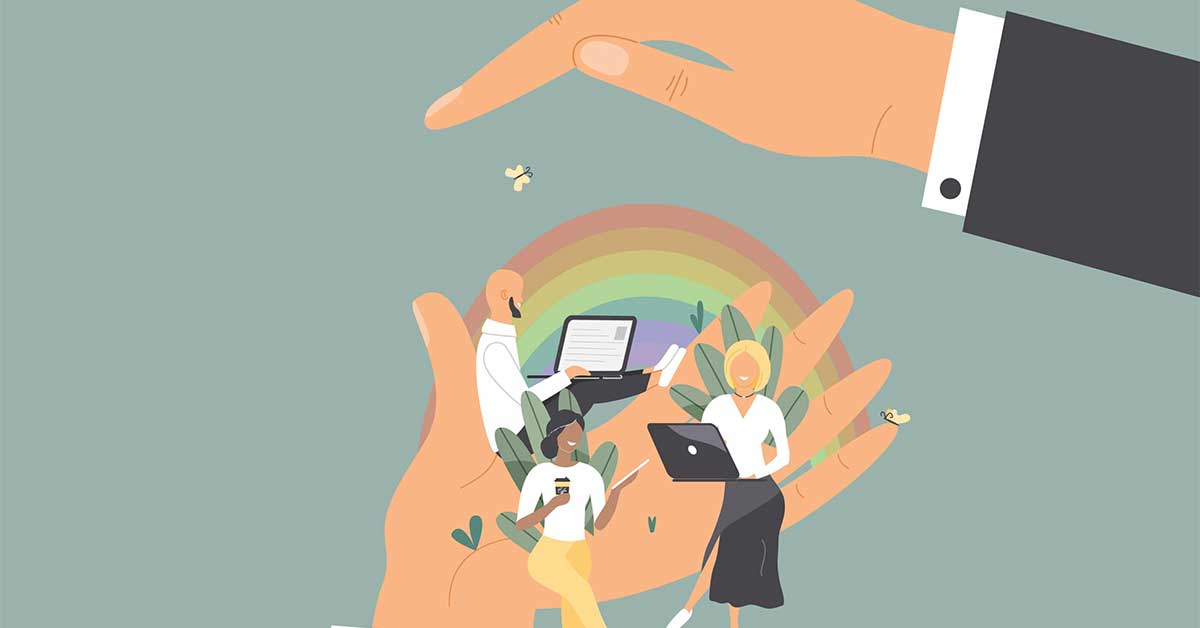Our attitudes impact our ability to thrive in our ambiguous world. It is evident that technology is changing the workplace as we know it; we face higher expectations, faster turnarounds, more unclear objectives and greater competition. Are we equipped to handle this growing ambiguity at any age?
There is an enormous amount of research around the topic of generational differences, with significant judgements associated with younger generations. This tendency for stereotype-confirming thoughts or attitudes that affect our understanding, actions and decisions is known as implicit bias. With the influx of Gen Z into the workforce and Millennials being in the workforce for nearly 20 years, we need to identify the impact of generational differences on change in the workplace. A recent study by Robert Half on generational differences in the workplace asked CFOs in which areas do they see the greatest differences amongst the generations of employees. The highest three areas identified- “30% communication skills, 26% adapting to change and 23% technical skills.” Baby Boomers were perceived as more reserved and Generation Y and X as more collaborative, with research revealing 40% of Millennials claiming Baby Boomers are more guarded and the same number of Boomers claiming Millennials are too brash. Generation X and Y viewed change as an opportunity and boomers were a bit more cynical towards the differences. And when it came to technology, Gen Z was most open to collaborative and technological driven tools.
AdaptiQ Minds decided to test these research hypotheses by conducting their own study with the Queensland University of Technology (QUT) studying attitudes towards ambiguity in a sample of 800 employees in a range of industries. The research and questionnaire focused on an individual’s tolerance of ambiguity in the workplace. The results showed generational differences in attitudes: 70% of Generation Y respondents scored below the average (mean) score on the questionnaire; Generations Z and Y were twice as likely as older workers to score in the bottom 10%, and about half as likely to score in the top 10%. “We found that those with positive attitudes towards ambiguity were more creative, better leaders and better overall performers. They reported lower stress levels and higher income than those with negative attitudes towards ambiguity,” said Peter O’Connor, head researcher at QUT.
This research indicates three traits common to workers who cope well with ambiguity:
• They report remaining calm and composed in the face of ambiguity.
• They have a strong desire for challenging work, reporting a strong preference for variety and risk over routine.
• They have skills that enable them to manage uncertainty, reporting being very good at planning, utilising resources and problem-solving.
However, the appetite for change is not based on age or generation; we can all grapple with ambiguity. But we often have attitudinal bias when it comes to judging other generations and their appetite for change. Our research findings pointed to a paradox, “Generations Y and Z express just as much desire for novel, challenging work as older workers, but they tended to lack the skills and confidence required to manage uncertainty when it occurs and are more likely to become anxious. These results challenge a common stereotype about younger people: that being “digital natives” means they are equipped with the skills required to adapt and flex. This study found strong evidence to the contrary. Does this mean certain generations are at a disadvantage?
Frankly no, attitudes and our ability to cope with change can be developed. Implicit attitudes can change, especially over the long term. Research published in Psychological Science, collected data from more than 4 million tests between 2004-2016 finding that Americans attitudes towards certain social groups have become less biased over time. Comparable research has also shown that individuals in any generation can learn to better tolerate ambiguity. But how? A recent research study, Motivating by Appreciation Inventory, analysed the responses of 55,000 employees over four years, finding that all generations valued words of appreciation and quality time the most. “The biggest difference wasn’t in the type of appreciation they favoured but how they preferred that language of appreciation to be shown.” Any generation can develop their tolerance of ambiguity through motivation and increasing their exposure to ambiguity. This might include building a curious mindset, focusing on mindfulness, thinking differently and encouraging creativity, being courageous despite being unsure or uncertain and focusing on where progress can be made rather than focusing on past failures.
The overall message is – individuals from different generations think differently. We must all learn to eliminate biases and better tolerate ambiguity through motivation, developing the habits linked to tolerance of ambiguity and increasing our exposure to ambiguity. At Change 2020, we help individuals and organisations to embrace change, think differently and learn to tackle complexity in unfamiliar situations. To find out more about becoming a transformational leader and building your ability to accept change, get in touch with us here.




